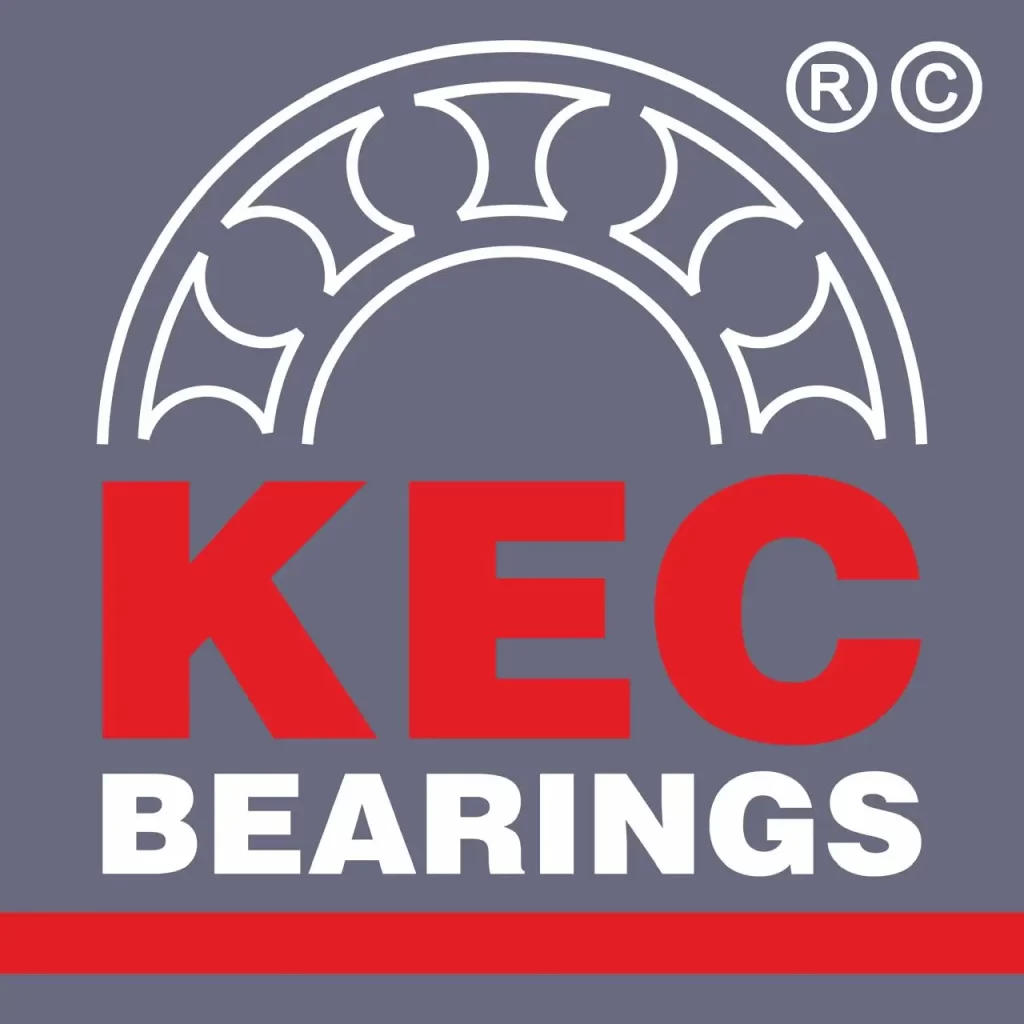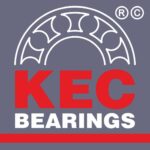Introduction
Bearings are vital components that support rotary motion in various machinery, and selecting the right type is crucial for efficient operation and longevity of the equipment. Spherical Roller Bearings (SRBs) and Four-Row Cylindrical Roller Bearings (CRBs) are commonly used in heavy-duty industrial applications, but they have distinct differences that can significantly impact performance.
This detailed comparison will explore the design, load capacity, misalignment tolerance, speed capabilities, friction and heat generation, applications, maintenance, and lifespan of SRBs and CRBs. By understanding these factors, engineers and technicians can better determine which bearing type is optimal for specific operational conditions, ensuring reliability, reducing downtime, and optimizing the cost-performance ratio of machinery.
1. Design and Construction
Spherical Roller Bearings (SRBs):
- Design Elements: SRBs consist of an inner ring with two raceways, an outer ring with a single spherical raceway, and two rows of barrel-shaped rollers. This design allows the rollers to move freely within the bearing, providing self-aligning capabilities.
- Material and Components: Typically made from high-quality steel or stainless steel, the rollers are designed to handle high loads with minimal deformation. The cages, often made of steel or brass, help maintain roller spacing and reduce internal friction.
- Self-Alignment Feature: The spherical outer raceway of SRBs provides automatic alignment, which compensates for shaft misalignment, deflection, and housing imperfections.
Four-Row Cylindrical Roller Bearings (CRBs):
- Design Elements: CRBs consist of four rows of cylindrical rollers that are separated by cages to minimize friction. The rollers are guided between the inner and outer rings, offering precise positioning of the shaft with minimal axial displacement.
- Material and Components: CRBs are made of high-strength steel designed to withstand extreme radial loads. The cages are usually constructed from steel, polyamide, or brass, depending on the application requirements.
- Precision Design: The design of CRBs focuses on maximizing radial load capacity and maintaining accurate shaft positioning, which is crucial in high-precision applications like rolling mills.
2. Load Capacity and Distribution
Spherical Roller Bearings (SRBs):
- Load Distribution: The dual rows of barrel-shaped rollers distribute the load evenly across the bearing, minimizing stress concentrations. The design allows SRBs to handle high radial and moderate axial loads simultaneously.
- Load Capacity: SRBs are well-suited for applications with varying loads and conditions. They can withstand heavy shocks, making them ideal for equipment subjected to vibrations and impact loads.
Four-Row Cylindrical Roller Bearings (CRBs):
- Load Distribution: CRBs are optimized for heavy radial loads with uniform load distribution across the four rows of rollers. The precise roller alignment reduces internal stresses and enhances load-bearing efficiency.
- Load Capacity: CRBs offer superior radial load capacity compared to SRBs, making them ideal for high-load applications such as rolling mills, where heavy radial forces are prevalent. However, they have limited capability to handle axial loads and require additional bearings for axial support.
3. Misalignment Tolerance
Spherical Roller Bearings (SRBs):
- High Misalignment Tolerance: SRBs are known for their ability to compensate for angular misalignment between the shaft and housing. They can accommodate misalignment up to 2-3 degrees without compromising performance.
- Operational Benefits: This flexibility makes SRBs suitable for applications where misalignment is unavoidable, such as in shafts with deflection, mounting errors, or applications with high shaft bending.
Four-Row Cylindrical Roller Bearings (CRBs):
- Low Misalignment Tolerance: CRBs have very little tolerance for misalignment due to their rigid design. Even minor misalignments can cause uneven roller contact, leading to increased wear and reduced bearing life.
- Alignment Requirements: Proper alignment during installation is crucial for CRBs. Inaccurate alignment can result in premature failure, requiring frequent maintenance and precise monitoring.
4. Speed Capabilities
Spherical Roller Bearings (SRBs):
- Moderate Speed Capability: The self-aligning feature of SRBs creates additional internal friction, limiting their speed capabilities. They perform well at moderate speeds but are not ideal for high-speed applications.
- Speed Limits: Speed ratings for SRBs depend on the lubrication and specific design but are generally lower compared to CRBs. The increased contact area between the rollers and raceways generates heat, which can affect performance at high speeds.
Four-Row Cylindrical Roller Bearings (CRBs):
- High-Speed Capability: CRBs are designed for high-speed applications, thanks to their lowfriction design and precision roller guidance. The absence of self-aligning features reduces internal friction, allowing for higher operating speeds.
- Speed Limits: CRBs can handle higher speeds with proper lubrication and cooling, making them suitable for applications like rolling mills, where both high speed and heavy load capacity are required.
5. Friction and Heat Generation
Spherical Roller Bearings (SRBs):
- Friction Characteristics: The self-aligning nature of SRBs leads to higher friction levels, particularly when accommodating misalignment. This can generate additional heat, necessitating effective cooling and lubrication.
- Heat Management: SRBs require consistent lubrication to manage friction and prevent overheating, especially in high-load conditions. Proper maintenance is crucial to avoid lubrication failure.
Four-Row Cylindrical Roller Bearings (CRBs):
- Friction Characteristics: CRBs are engineered to minimize friction with precise roller guidance and optimized surface finishes. The separation of rollers by cages reduces contact friction, contributing to lower operating temperatures.
- Heat Management: CRBs generally operate at lower temperatures compared to SRBs due to reduced friction. However, in high-load applications, effective lubrication and cooling systems are still essential to ensure reliable operation.
6. Applications
Spherical Roller Bearings (SRBs):
- Common Applications: SRBs are widely used in industries like mining, construction, paper mills, and heavy machinery, where equipment is exposed to heavy loads, shocks, and shaft misalignment.
- Versatility: Their ability to handle both radial and axial loads makes them suitable for various applications, including gearboxes, conveyors, and crushers.
Four-Row Cylindrical Roller Bearings (CRBs):
- Common Applications: CRBs are extensively used in steel and aluminum mills, continuous casting machines, and large gear drives, where precision, high radial load capacity, and speed are critical.
- Specialized Use: They are ideal for applications requiring heavy radial load support without significant axial load handling, such as rolling stands in metal processing.
7. Maintenance and Lifespan
Spherical Roller Bearings (SRBs):
- Maintenance Requirements: Regular inspection, lubrication, and alignment checks are necessary to extend SRBs’ lifespan. They are relatively easy to maintain due to their robust design and self-aligning capability.
- Lifespan Considerations: SRBs generally have a long service life, but their performance can degrade if exposed to excessive misalignment or inadequate lubrication.
Four-Row Cylindrical Roller Bearings (CRBs):
- Maintenance Requirements: CRBs demand precise alignment during installation and operation. Misalignment or poor lubrication can significantly reduce their lifespan, requiring detailed monitoring and maintenance protocols.
- Lifespan Considerations: When properly maintained, CRBs offer excellent longevity in high-load, high-speed environments. However, failure to meet alignment and lubrication standards can lead to premature bearing failure.
8. Cost Considerations
Spherical Roller Bearings (SRBs):
- Cost Factors: SRBs are generally cost-effective due to their versatility and ability to handle misalignment. However, the need for frequent lubrication and cooling can add to operational costs.
- Replacement and Downtime: Easy to replace and maintain, minimizing downtime in industrial applications.
Four-Row Cylindrical Roller Bearings (CRBs):
- Cost Factors: CRBs are typically more expensive upfront due to their complex design and higher load capacity. The precise alignment required during installation can also increase setup costs.
- Replacement and Downtime: Replacement of CRBs can be more time-consuming, and improper alignment can lead to costly failures, impacting overall operational efficiency.
9. Conclusion
Choosing between spherical roller bearings and four-row cylindrical roller bearings depends on the specific requirements of your application. SRBs are preferred for their ability to handle misalignment and combined loads, making them versatile in harsh conditions. In contrast, CRBs offer unmatched radial load capacity and high-speed performance, making them the bearing of choice for precision-heavy applications like rolling mills.
Understanding the design, load capacity, misalignment tolerance, speed capabilities, and maintenance needs of each bearing type will guide you in selecting the right bearing for your machinery, ultimately improving performance, reliability, and operational efficiency.
Actionable Advice
We at KEC Bearings provides in depth knowledge and solution related to bearing selection. You can understand the difference between bearings features and parameters from above blog. But if anyone want to select bearing then process of the bearing selection must go through many more steps taken in to consideration. You can contact our technical team on below mentioned contact details for in depth knowledge and solution related to bearing selection. You can also follow us on our social media platforms or login to our knowledge sharing app by visiting to our website.
Contact Us
KEC Bearings Pvt Ltd
G-2408A, F2 Road, Almighty Gate, Lodhika GIDC, Metoda – 360021, Rajkot, Gujarat (INDIA)
Website: www.kecbearings.com
Email: sales@kecbearings.com
WhatsApp: +91 9330 96 9330

